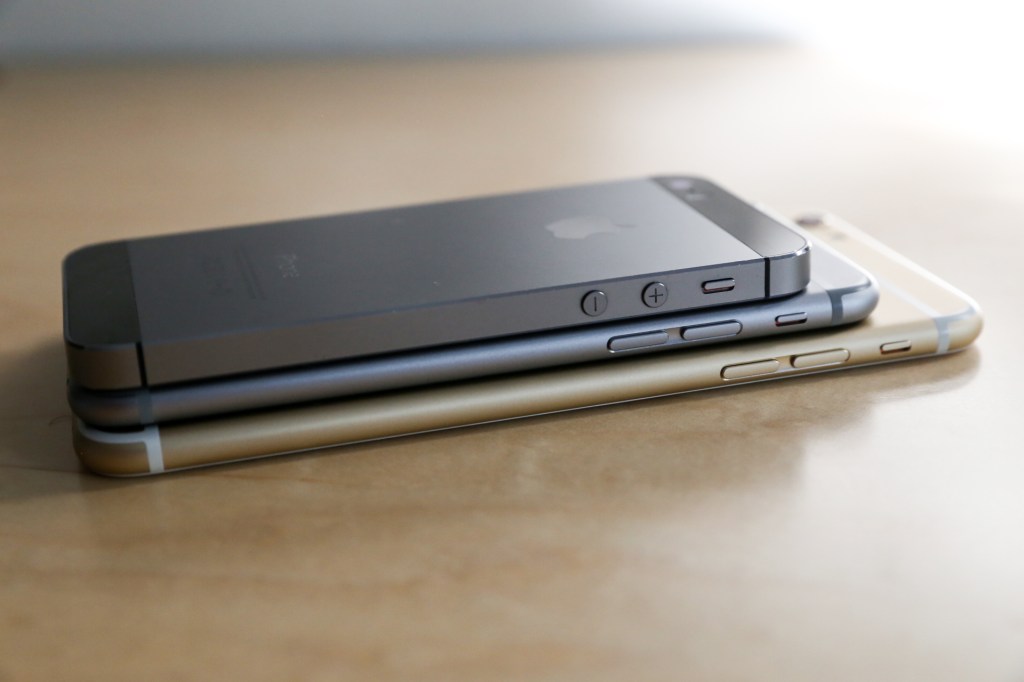Apple is expected to unveil new iPhones at an event next Wednesday, and likely also new iPads and an updated Apple TV.
Press invites for a September 9 event at the Bill Graham Civic Auditorium dropped late last month bearing the usual teasing hint — this time focused on Apple’s voice assistant Siri.
September is the month Apple traditionally refreshes its handsets so new iPhones are a dead cert. Here’s a quick round-up of the tweaks Apple watchers are expecting this time around…
iPhone 6S and iPhone 6S Plus
Apple finally introduced a phablet-sized iPhone at its event last year, the 6 Plus, expanding its handset portfolio to address the rampant screen size inflation of rival phones running the Android OS. Given how long it took Apple to make that move, it’s unlikely to radically rethink its handset line-up for a while — so a refreshed iPhone 6 and 6 Plus are expected, likely following Apple’s typical naming convention of adding an ‘S’ after the model name.
But what of the 4-inch iPhone 5C? 9to5mac reckons Apple will be discontinuing the plastic-clad not-actually-that-budget handset after its latest portfolio refresh, with no immediate replacement — although there are ongoing rumors it’s working on a new 4-inch iPhone to fill the gap. Most Apple watchers are only expecting two new iPhones this fall.
Same shape, more robust feel
Apple typically follows a two-year design refresh cycle for its smartphones so after the rebooted look of the iPhone 6 and 6 Plus last year it’s pretty safe to assume the iPhone 6S and 6S Plus will be sticking with the same metal + rounded-edges design.
That said, Apple did have to endure bendgate, as people all over the Internet discovered that putting an iPhone in their jeans pocket and sitting on it for long periods was probably a bad idea. So a more robust metallic shell looks likely. Supply chain leaks last month suggested Apple is switching to lighter but stronger 7000 series aluminum.
Also possible: a new pinkish color option, alongside the existing gold/silver/gray metallic tones.
Faster processor, larger camera sensor
Better internals are a staple update for Apple hardware so a faster A9 chipset (plus other chipset upgrades) and more RAM in the new iPhones are incoming. 2GB of RAM is expected.
Also on the cards: larger camera sensors. Photography remains a huge focus for Apple’s iPhone marketing, with its ‘shot on the iPhone 6‘ campaign, so it’s no surprise the company would be spending to keep improving the hardware here.
The upgraded rear camera is slated to be equivalent to a 12 megapixel sensor, and expected to support 4K video recording. The front-facing FaceTime camera is also expected to get a sensor upgrade — and given the continued popularity of selfies (not to mention rivals marketing ‘selfie phones‘) that’s pretty safe thinking from Apple.
Force Touch and Taptic engine
Apple introduced another interface layer to some of its mobile devices this year — in the form of its Force Touch pressure-sensitive input method. The tech debuted on the Apple Watch and is also on Macbook trackpads. And it’s now widely expected to land on iPhones (and likely also iPads).
Writing for 9to5mac yesterday, Apple tipster Mark Gurman said Force Touch will be one of the “cornerstone” features of the new iPhones — and will also be a more sophisticated version of the tech vs what we’ve already seen on other Apple hardware, with support for three types of input: a tap, a press and a deeper press. His sources claim this implementation will be called ‘3D force touch’.
Apple is also slated to embed the Taptic engine tech it debuted on the Apple Watch into the new iPhone screens to provide haptic feedback to users.
Now haptic, pressure-sensitive touchscreens aren’t new tech per se. Those with a long memory might recall BlackBerry’s ill-fated foray into making a ‘clickable touchscreen’, back in 2008, for instance. So effortless execution is definitely essential here — to avoid turning something slickly straightforward into something that feels fiddly and confusing.
How Apple expands input complexity on its iPhones without sacrificing the core simplicity of devices that have plenty of fans far outside the geek fringe will certainly be interesting to watch.
Siri
Given Apple’s voice assistant is the focus of the press invite it’s unlikely to be overlooked during the actual event itself. Asking Siri for a hint about the forthcoming Apple event surfaces some typical Siri snark, along with some equally typical voice recognition failures so there’s plenty of room left for Apple to improve the core tech.
That said, the flagship Siri upgrade coming next week may well not be related to the core tech or to Apple’s new iPhones at all. Rather it might be about embedding the voice assistant tech into a new device that’s slated to be introduced with the new Apple TV (a TV remote control).
If that’s the case, Apple continuing to foreground Siri on devices other than the iPhone, where it debuted, is a shift worthy of note (see also: the Apple Watch). Especially given that it apparently intends to step up the touch-sensitive sophistication of its smartphones (i.e. via 3D Force Touch).
Apple’s thinking in and around Siri could thus be summed up as: handsets are the highly personal mobile computers we’re most comfortable handling, while wearables and in-home hubs are keyboard-less techs we’re most likely to want/need to talk to at a convenient distance — making the latter categories more of a natural home for Siri than the iPhone.































Comment